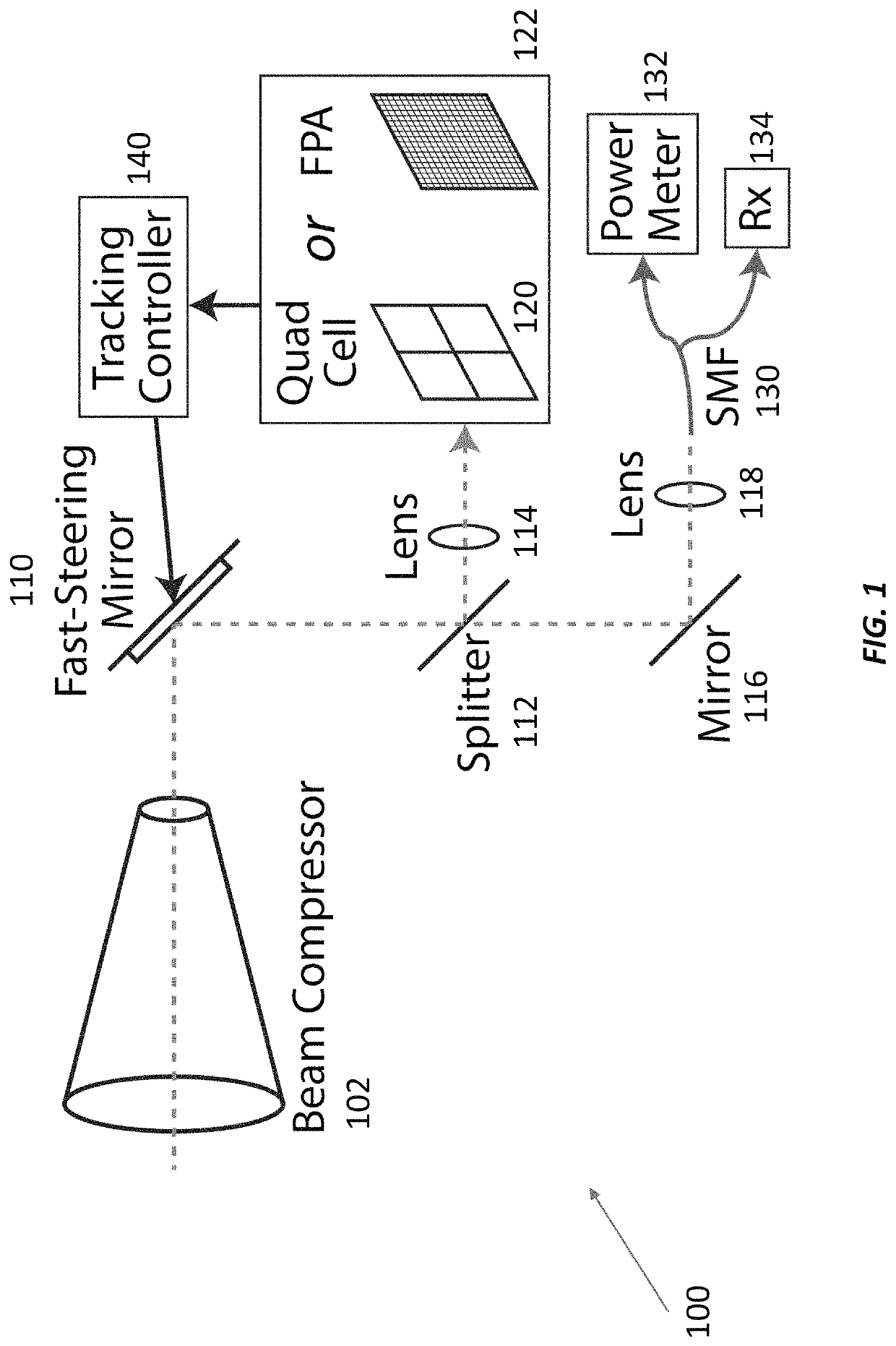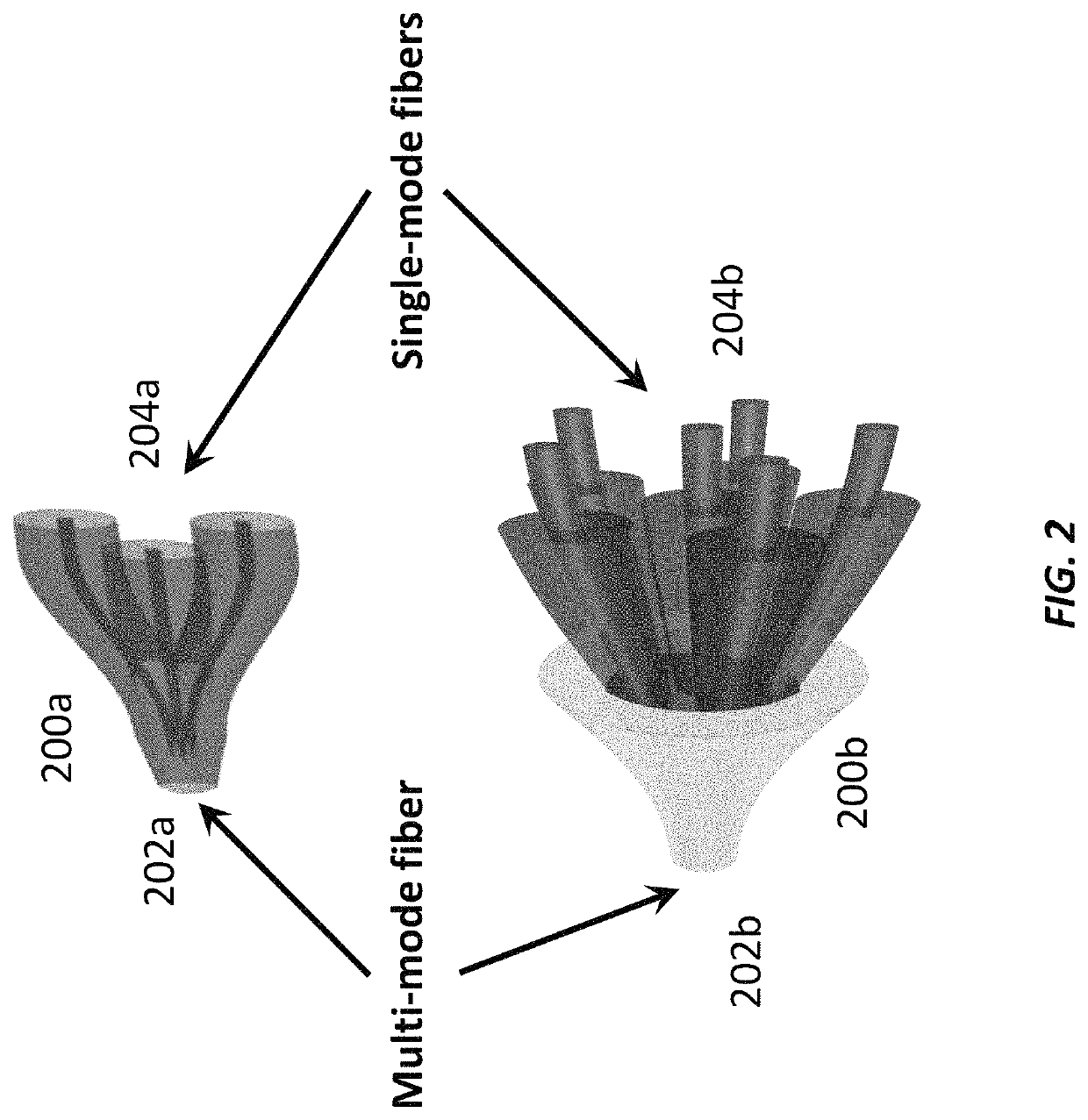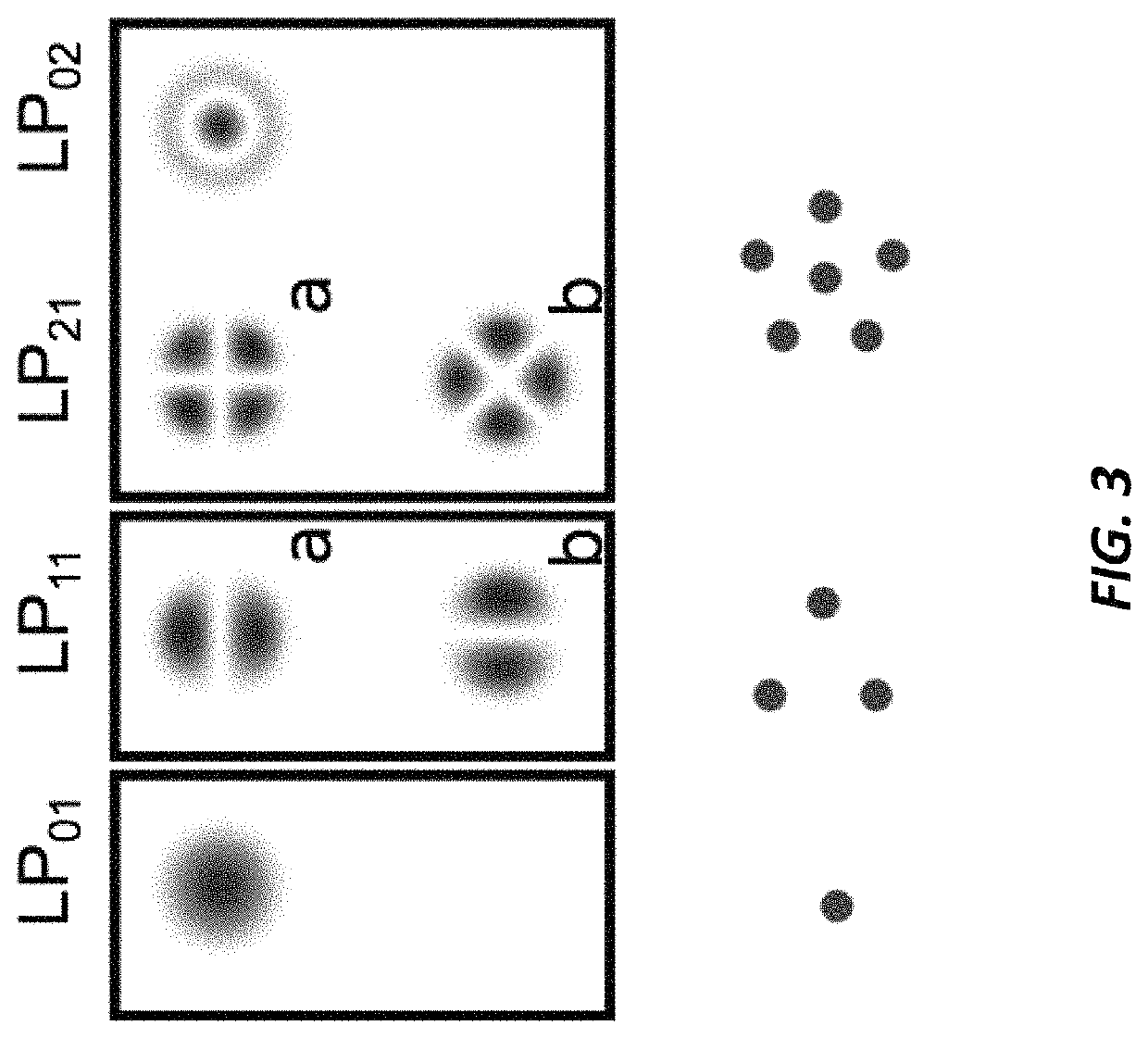Multi-spatial mode enabled PAT and AO terminal architecture for free-space optical communications
a terminal architecture and free-space technology, applied in multiplex communication, line-of-sight transmission, wavelength-division multiplex systems, etc., can solve the problems of reducing the complexity affecting the efficiency of the overall system, and difficult to couple light into a single-mode fiber, etc., to achieve a wider acceptance angle, reduce the effect of complexity and large effective core area
- Summary
- Abstract
- Description
- Claims
- Application Information
AI Technical Summary
Benefits of technology
Problems solved by technology
Method used
Image
Examples
Embodiment Construction
[0032]Multi-spatial mode pointing, acquisition, and tracking (PAT) technology can be used for determining tilt angle of an incident free-space optical communications beam without diverting energy from the communications receiver. In particular, the spatial tracking information in the focal plane can be determined by the relative amount of signal detected in different spatial modes. In this way, it becomes possible to increase or maximize the received energy for communications while simultaneously detecting tilt angle. There are multiple ways in which multiple spatial modes can be used to determine tilt angle information.
[0033]One technique involves coupling light from a receive aperture to a multi-mode fiber (MMF) or few-mode fiber (FMF). The light energy in the MMF or FMF is then separated into several single-mode fiber (SMF) outputs using a passive MMF-to-SMF or FMF-to-SMF convertor that has one SMF output for each spatial mode in the MMF or FMF. A passive spatial mode convertor c...
PUM
 Login to View More
Login to View More Abstract
Description
Claims
Application Information
 Login to View More
Login to View More - R&D
- Intellectual Property
- Life Sciences
- Materials
- Tech Scout
- Unparalleled Data Quality
- Higher Quality Content
- 60% Fewer Hallucinations
Browse by: Latest US Patents, China's latest patents, Technical Efficacy Thesaurus, Application Domain, Technology Topic, Popular Technical Reports.
© 2025 PatSnap. All rights reserved.Legal|Privacy policy|Modern Slavery Act Transparency Statement|Sitemap|About US| Contact US: help@patsnap.com



